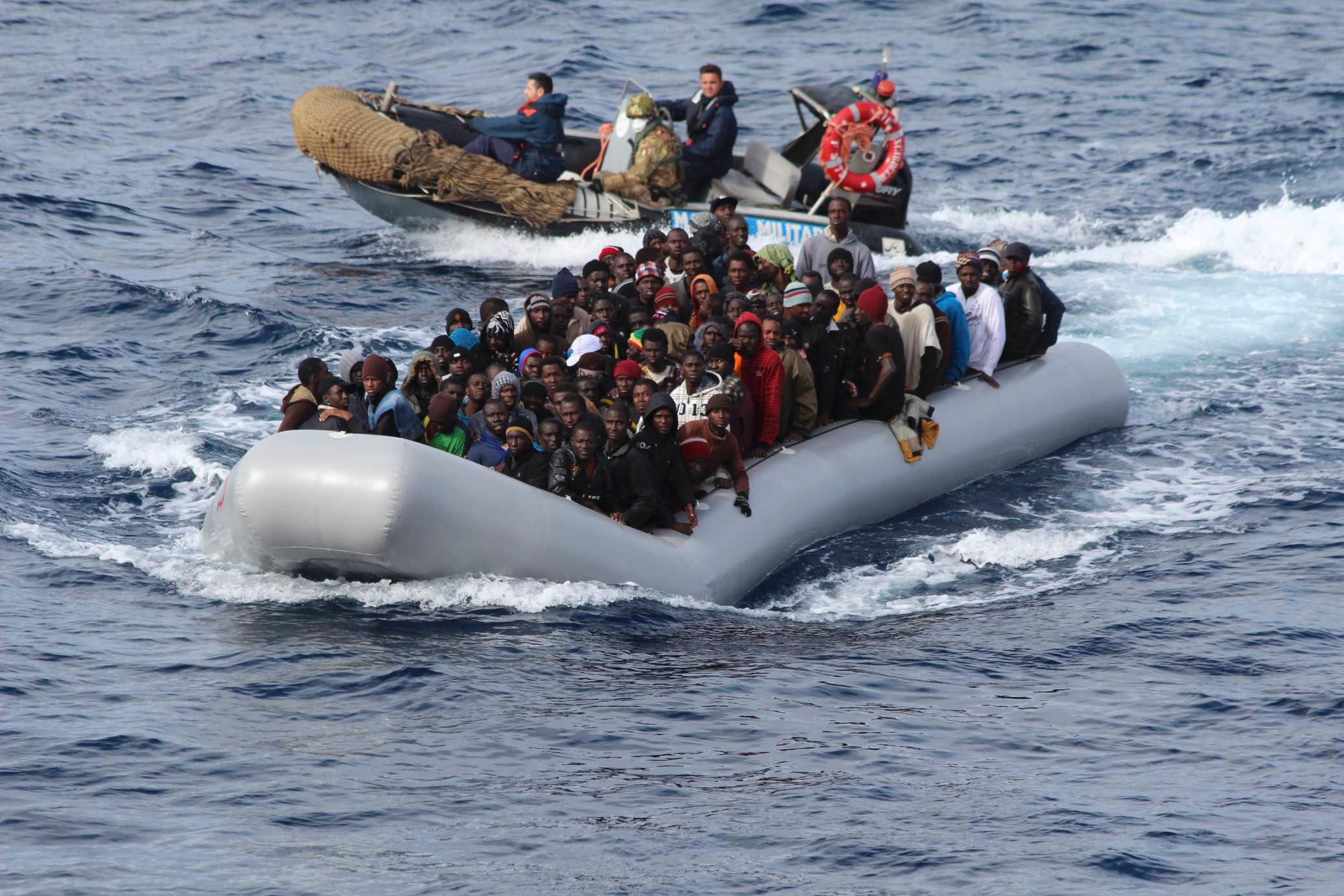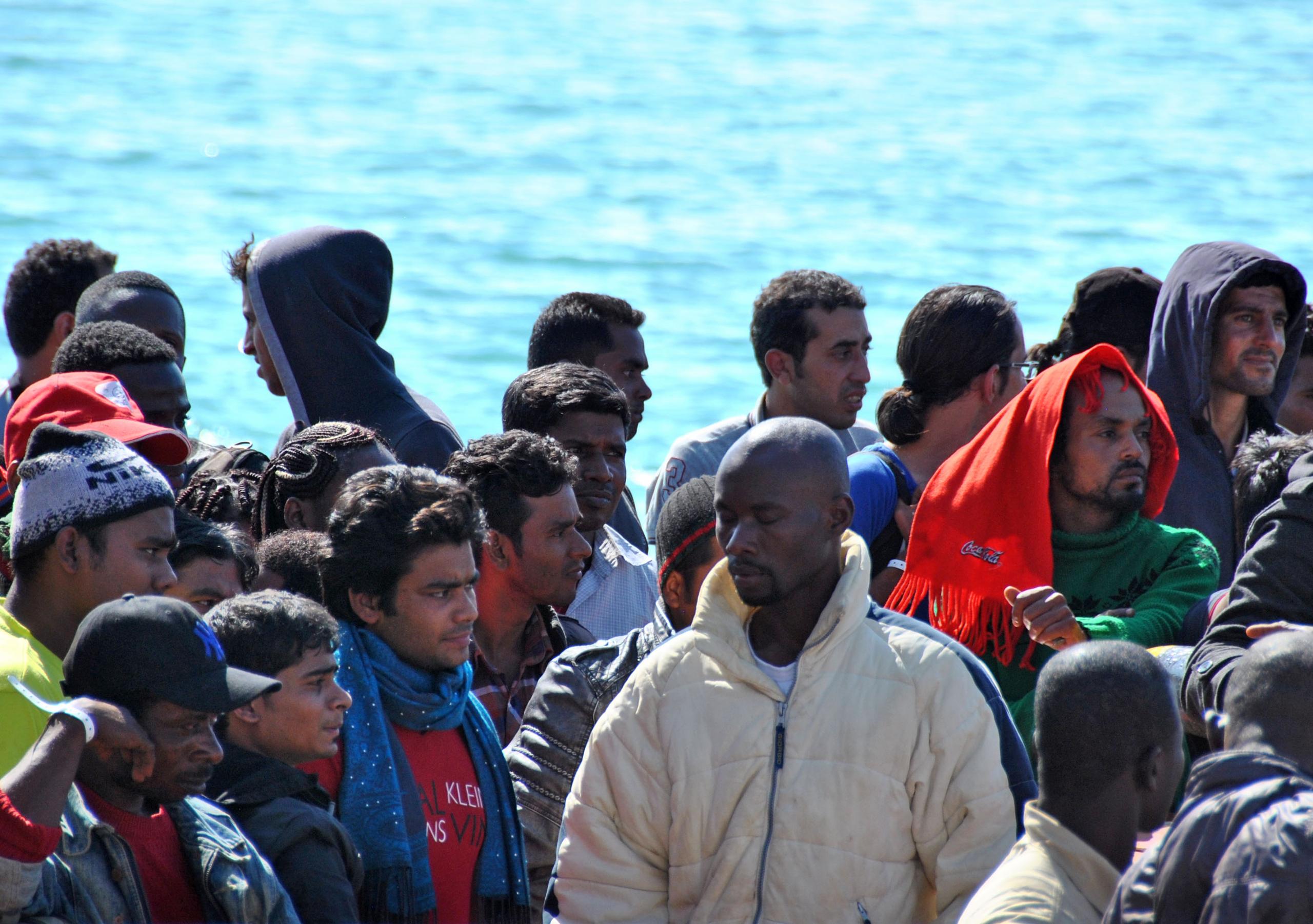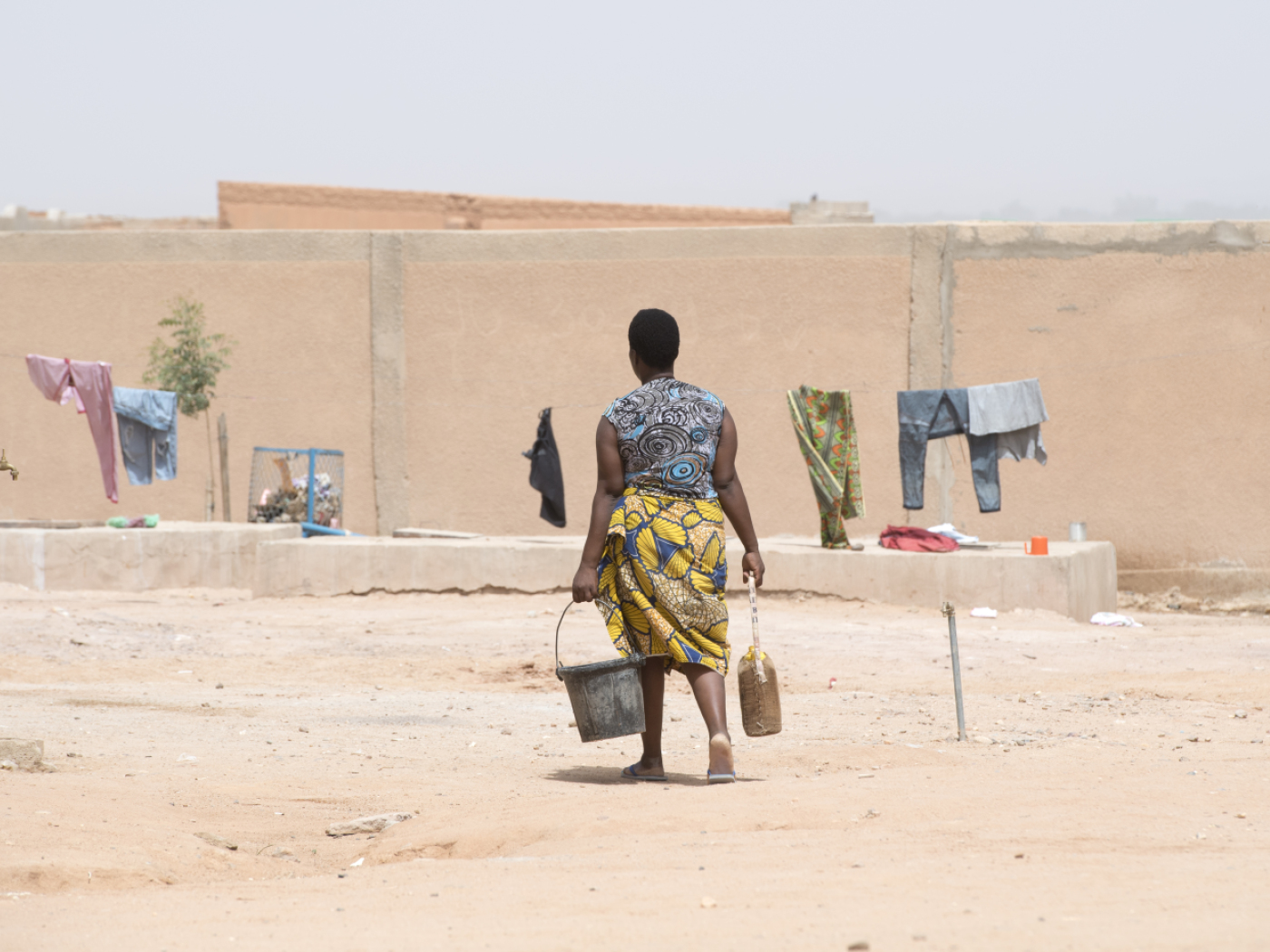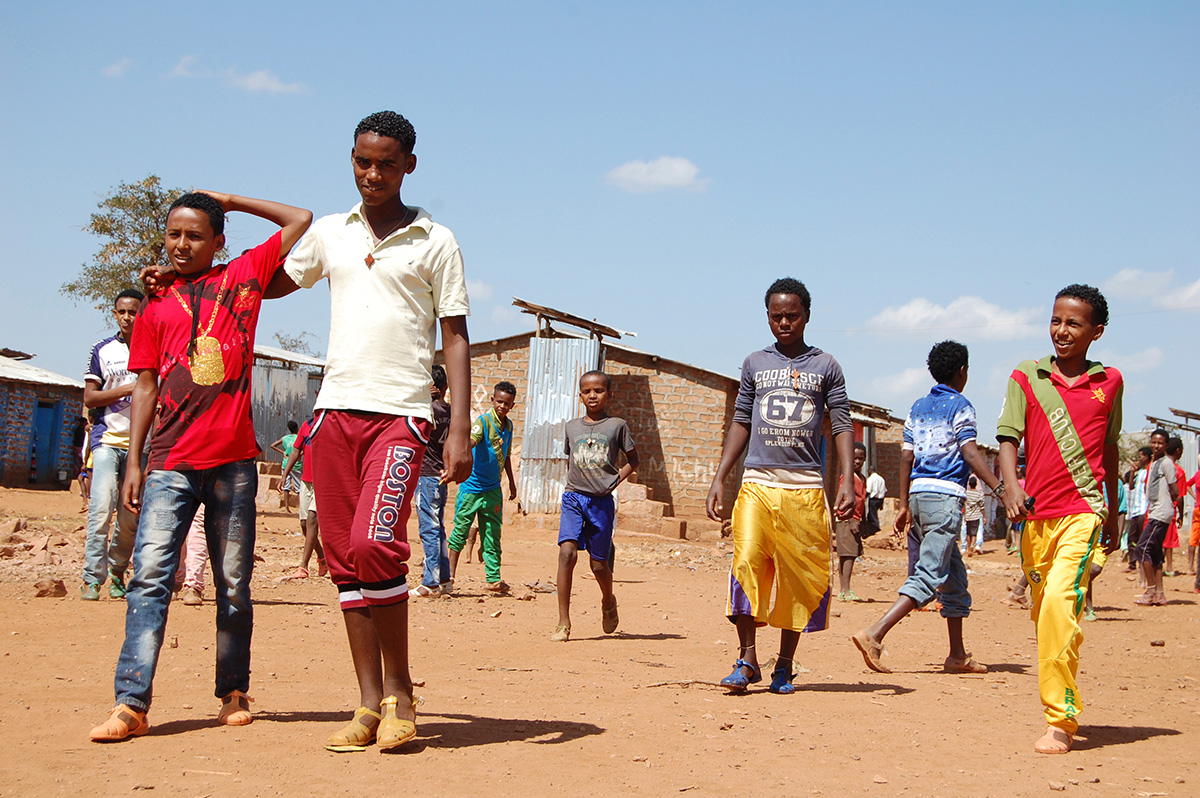Who will save migrants from a watery grave?

With the launch of operation Triton to replace Italy’s Mare Nostrum, which has rescued 150,000 people, the European Union has redefined its priority as securing its Mediterranean border. swissinfo.ch went to Sicily to witness the situation on the front line.
The frigate Aliseo has arrived in the port of Pozzallo in the early morning. It is the beginning of October and operation Mare Nostrum is drawing to a close. Huddled together on deck are 435 migrants, including eight women and a child, mainly from sub-Saharan Africa. They set out a week ago from the coast of Libya. They have spent three days on the open sea and four on board one of the 32 ships the Italian navy has assigned to operation Mare Nostrum.
The operation’s Latin name, meaning “our sea”, recalls the term the ancient Romans used when referring to the Mediterranean, and indicates a taking of responsibility for what goes on offshore.
“They were travelling on three rubber dinghies and got stranded 70 miles [113 kilometres] from the Libyan coastline in international waters,” explains Mario Giancarlo Lauria, captain of the Aliseo. “The first thing we had to do was calm them, because even a small amount of movement can be fatal. One of the dinghies was taking on water – we got there just in time.”
For over a year now, Italy has been coming to the aid of migrants in the Mediterranean and has been asking for European Union involvement, but in vain.

More
Goodbye Mare Nostrum
The EU has responded by launching on November 1 “Triton”, an operation focused on patrolling the border and combatting people-smuggling. Search and rescue are no longer a priority.
Under the aegis of the European border security agency Frontex, Triton has so far had the participation of 15 European States, including Switzerland, with a monthly budget of €2.9 million (CHF3.5 million), which is a third less than Mare Nostrum.
“Mare Nostrum was a humanitarian and military mission, which had nothing to do with Triton. The goal of Frontex is to make sure that no one enters European territory undetected. Clearly where there is a risk of shipwreck, migrants will be brought to safety as required by international law, but this is not the goal of Triton,” says Izabella Cooper, a spokesperson for Frontex.
The change of priorities means that Triton will operate within 30 nautical miles (55km) of the Italian coast, while Mare Nostrum ranged almost as far as Libya, rescuing groups like the 435 migrants who were brought ashore at Pozzallo.
Mare Nostrum consequences
The ship has been in port for a couple of hours when the first young Africans start to get off in small groups of four or five. The police give them an armband with a four-digit number and photograph them as a sort of temporary identity.
While a first group is taken straight to Messina, about 200km from Pozzallo, the others go to the tent of Médecins Sans Frontières for a health check-up.
Launched in October 2013 after the shipwreck of 368 people off Lampedusa, operation Mare Nostrum has since come to the aid of 150,000 migrants and led to the arrest of 500 people-smugglers.
But there were consequences. In the space of a year, Italy spent €112 million on Mare Nostrum, €9.5 million a month. Under the terms of the Dublin Agreement, it also had to take over the responsibility and the costs for housing these people.
Already overwhelmed by the migration crisis for some time, Italy now found itself faced with a significant increase in the number of arrivals – from 60,000 in 2013 to 165,000 by the end of October 2014. It gave up registering them systematically in the EURODAC database, which attracted the ire of other European countries, especially Switzerland. Without fingerprinting as evidence of arrival in Italy, migrants cannot be sent back.
Lack of support
Support for Mare Nostrum declined steadily, especially within the EU. Many politicians were convinced that the Italian operation amounted to an incentive for migrants, in fact increasing the traffic.
According to Ferruccio Pastore, director of the International and European Forum of Migration Research in Turin, it is very hard to determine objectively whether the operation attracted migrants.
“It is undeniable that in the past year the situation in countries like Syria and Libya has got worse, and this has meant a growing number of people on the move. Without even taking into account that, since the fall of Gaddafi there is no longer a state acting as a buffer on our south flank.”
The European Union has to take its own share of responsibility for the increase in the number of landings, says Denise Graf, a lawyer and asylum specialist with the Swiss section of Amnesty International.
“Europe has built a wall around itself – there is one in Greece, one in Bulgaria, one in Ceuta and Melilla [Spanish cities on the north coast of Africa]. This is another barrier added to the now firmly closed border between Israel and Egypt. The European States, Switzerland included, have cut back as much as they can on family reunions and the right to request legal asylum at embassies. The only practicable route now, for anyone hoping for asylum in Europe, is the illegal Mediterranean route.”
Lack of will to act
In recent months, the number of shipwrecks has started to rise again in spite of Mare Nostrum. More than 3,300 deaths were recorded by the UN High Commission for Refugees (UNHCR) in 2014 – 2,700 of them since the beginning of June.
“The number is certainly larger,” says Chiara Montaldo of Médecins Sans Frontières. “How many times have migrants told us they came in five boats – what happened to the other two?”
With the end of Mare Nostrum, the situation at sea could get worse, especially in the early months when the news has not yet spread in Libya and people-smugglers can capitalise on a lack of awareness by migrants.
The international humanitarian organisations, including UNHCR, deplore the lack of willingness on the part of European states to prevent these deaths in the Mediterranean by adopting a more far-sighted and coordinated policy.
“The European Union cannot just shut its eyes and pretend that shipwrecks are not happening,” says Graf of Amnesty International.
Mare Nostrum
- Aim: saving migrants at sea
- Countries involved: Italy
- Budget: 9.5 million euro per month (114 in total)
- Resources: 32 navy ships; 2 submarines; helicopters and planes
- Staffed by: 900 armed forces personnel each day on a 24-hour basis
- Range of operation: territorial waters and international waters off Libya
Triton
- Aim: patrolling frontiers and fighting people-smuggling
- Countries involved: 15, including Switzerland
- Budget: 2.9 million euro per month
- Resources: 7 ships, two planes and a helicopter
- Staffed by: number unknown
- Range of operation: 30 miles off the Italian coast.
(Translated from Italian by Terence MacNamee)

In compliance with the JTI standards
More: SWI swissinfo.ch certified by the Journalism Trust Initiative













You can find an overview of ongoing debates with our journalists here . Please join us!
If you want to start a conversation about a topic raised in this article or want to report factual errors, email us at english@swissinfo.ch.